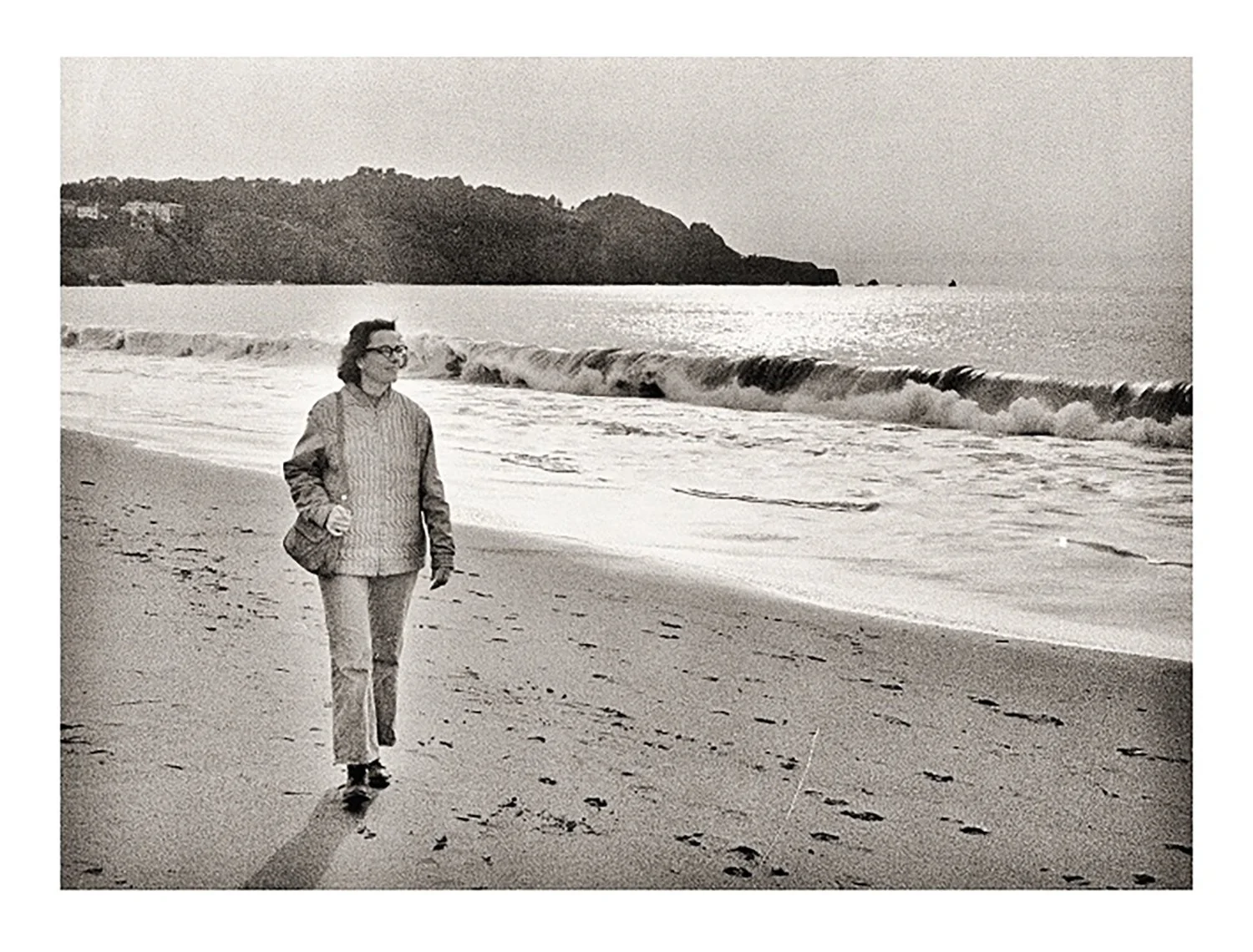The Art of Conservation: Amy Meyer’s Mosaic Journey
Amy Meyer at home in San Francisco, California. Photo credit Abby Connolly.
“All of our gains are temporary, all of our losses are permanent.’ So we have to keep watching out and working all the time to protect these natural and cultural treasures.”
In the heart of San Francisco, a city renowned for its iconic Golden Gate Bridge and bustling urban life, lies a verdant expanse that tells a story of passion, perseverance, and the power of community. This is the tale of Amy Meyer, a collage artist turned conservationist, whose life work has been to piece together not just art, but entire landscapes into a cohesive whole.
Amy’s story begins in the bustling streets of Brooklyn, New York, where her early years were marked by a profound appreciation for nature’s intricacies, and instilled during idyllic summers spent at Lake Oscawana near Peekskill New York. “My mother, a native of New York’s Lower East Side, introduced me to the simple joys of the natural world, from berry picking to the serene beauty of untouched landscapes,” Amy recalls. These childhood experiences laid the foundation for a lifelong dedication to preserving the environment’s natural wonders.
A turning point in Amy’s life came with a move to San Francisco in the mid 1950s, a transition that transformed her from a staunch New Yorker to a fervent Californian. “The beauty and freedom I found here were unparalleled,” she says. It was in San Francisco’s Richmond District that Amy’s path took a pivotal turn towards conservation. Amy was “looking for a small community project” in 1970 when she heard about an initiative to save a local green space and Amy found her calling. With leadership from Washington’s Department of the Interior, alongside prominent figures like Ed Wayburn of the Sierra Club, John Jacobs of SPUR and with the support of organizations like the Marin Conservation League, People for a Golden Gate National Recreation Area was born. Amy embarked on a mission to protect the region’s natural landscapes from impending development.
Left: Sierra Club Hike in the Presidio in 1971. Photo courtesy of Golden Gate NRA Park Archives, People for a Golden Gate National Recreation Area Papers.
Right: Amy Meyer welcoming hikers to the Presidio in 1971. Photo courtesy of Golden Gate NRA Park Archives, People for a Golden Gate National Recreation Area Papers.
Drawing inspiration from the green belt of London, Amy and her fellow activists envisioned a contiguous green space that would unite the western parts of three counties: Marin and San Francisco - and later San Mateo’s natural areas. “We began to see the potential in connecting these disparate parks and lands, much like the pieces of a collage,” Amy explains. Thanks to their persistent grassroots efforts, Golden Gate National Recreation Area was established on October 27, 1972. By 1996 and several legislative enlargements, Amy’s “little community project” had turned into an 82,000 acre national park that is now sixty miles long and has one of the highest visitations in the national park system.
The Bay Area has a long history of conservation, with efforts dating back four centuries. The armies of Spain, Mexico and the United States protected land for defense; San Francisco began protecting its beaches in the 1870s; Muir Woods became a National Monument in 1907; and Mount Tamalpais was protected beginning in the 1920s. “There’s a tradition, an attitude about this beautiful place that we’ve got to keep it whole. But there’s also a saying that goes, ‘All of our gains are temporary, all of our losses are permanent.’ So we have to keep watching out and working all the time to protect these natural and cultural treasures,” Amy warns.
Amy Meyer walking along Baker Beach in 1973, now a part of the Golden Gate National Recreation Area. Photo courtesy of Golden Gate NRA Park Archives, People for a Golden Gate National Recreation Area Papers.
“Conservation is more than just protecting land; it’s about education, community engagement, and relentless advocacy.”
With over thirty-eight years dedicated to the preservation of parks and natural spaces, Amy’s work transcends traditional conservation efforts. After her successes in organizing for GGNRA Amy was appointed to the Recreation Parks Commission where she first experienced the Tuolumne River Watershed camping with her family at Camp Mather. A few years later John Amodio, Executive Director of Tuolumne River Trust at the time, reached out to Amy and brought her into the fight for Wild and Scenic status on the river. Leveraging her deep relationships in the city and her knack for organizing, Amy played a pivotal role in securing protection for the Tuolumne River and has remained a close advisor ever since.
Amy Meyer’s journey is a vivid illustration of how individual passion, when combined with collective action, can yield transformative results. Her life, a rich tapestry of artistic expression and environmental stewardship, serves as a beacon of inspiration for future generations. “Conservation is more than just protecting land; it’s about education, community engagement, and relentless advocacy,” she notes. Through her eyes, we see the world not as a collection of isolated fragments but as a grand, interconnected collage, each piece essential to the whole.
Tuolumne River Trust celebrates Amy Meyer, a true artist of conservation, whose legacy continues to shape and enrich the landscapes we cherish.




